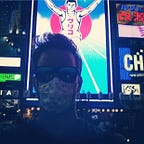‘Active shooter’
Following the mass killings at Umpqua Community College in Oregon, President Obama commented on the “routine” of his response to the tragedy, and the numbness to which we have come to feel towards the phenomena of mass shootings.
This is life in the age of the “active shooter.” It is morbidly fitting to use a clinical sounding term for mass murder. Our collective attitude seems to treat these tragedies like a national cold sore, a cyst that emerges periodically, whose pain can be assuaged by prayer and mourning, but for which there is ultimately no cure.
American malaise extends far past these murderers; however, we have also become numb to the routine of periodic military and police mass-killing, as the recent bombing of Médecins sans Frontières hospital in Afghanistan and the pardoning of the police officers involved in the murder of Tamir Rice in Ohio both attest. In a society of universal violence, feeling numb might not be a revolutionary act, but it is an understandable one.
Comments by conservatives in reaction to the carnage have also become routine, as they try to frame it as merely a chance “mental health issue” of wayward individuals. This has always been the lowest hanging fruit in this debate, and ironically it echoes arguments by liberals like Tipper Gore, who in the 90s believed that violent entertainment could randomly corrupt any youth who came in contact with it, like some kind of heavy-metal “Reefer Madness.”
The problem with these views has always been that neither art nor violence exists in a vacuum. Violence in America is not a spontaneous lapse of an individual mind — it is a public neurosis that is a product of social relations (or lack thereof). While it is inarguable that passing even basic gun control legislation at a national level or trying to foster a culture that is more empathetic would help curb violence in America, such measures would not stop or even begin to address the underlying issue of the mass insanity induced by economic inequality and state sanctioned brutality which ultimately inspire the desire, if not need, for violence (real or imagined) in the first place.
The sheriff of Roseburg, Oregon, famously refused to speak the shooter’s name at the press conference in the wake of the killings. Indeed, many mass shooters are motivated in part (if not entirely) by the desire for notoriety and infamy, at any and all costs — a notoriety and infamy they know the media cannot help but indulge them in. This, of course, is a pathology they share with many politicians, police, and Zimmerman-like vigilantes. The difference is that an “active shooter” is dealt with swiftly and is never granted impunity for his crimes. The “active shooter” is never found to have “acted reasonably”. The “active shooter” is recognized for the disease that he is.
There will be no shortage in the coming years of sociopaths rising out of the schizoid firmament of American rage, from either the margins of society or its positions of power.
It is up to the sane majority, like an abused spouse, to decide whether we will continue to medicate the problem or decide how we will begin the long and painful process of evicting our abusers.
Maxwell Sharp is a Tower co-editor. Email him at maxcsharp88(a)gmail.com
